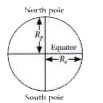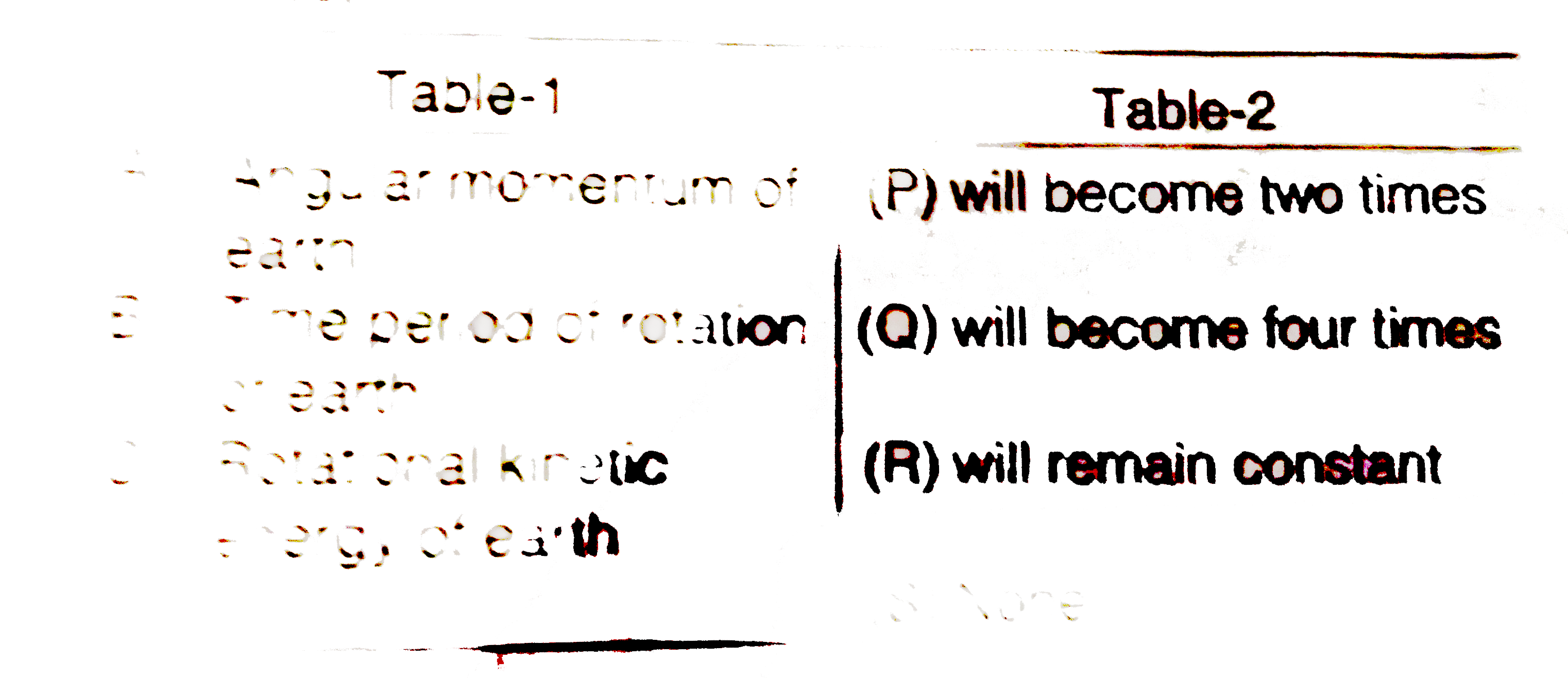When the radius of earth is reduced by 1% without changing the mass, then the acceleration due to gravity will
increase by 2%
decrease by 1.5%
increase by 1%
decrease by 1%
The correct Answer is:A
To solve the problem, we need to understand how the acceleration due to gravity (g) is affected by changes in the radius of the Earth (R) while keeping the mass (M) constant. The formula for acceleration due to gravity at the surface of a planet is given by:
g=GMR2
where:
- G is the universal gravitational constant,
- M is the mass of the Earth,
- R is the radius of the Earth.
1. Understand the Initial Conditions:
- Let the initial radius of the Earth be R.
- The initial acceleration due to gravity is g=GMR2.
2. Determine the New Radius:
- If the radius is reduced by 1%, the new radius R′ can be calculated as:
R′=R−0.01R=0.99R
3. Calculate the New Acceleration due to Gravity:
- Using the new radius, the new acceleration due to gravity g′ can be calculated as:
g′=GM(R′)2=GM(0.99R)2
4. Simplify the Expression:
- Substitute R′ into the equation:
g′=GM(0.99R)2=GM0.9801R2
- Since g=GMR2, we can express g′ in terms of g:
g′=g0.9801
5. Calculate the Factor Increase:
- To find the new value of g′:
g′≈1.0204g
- This indicates that the new acceleration due to gravity is approximately 2.04% greater than the original acceleration due to gravity.
Final Answer:
When the radius of the Earth is reduced by 1% without changing the mass, the acceleration due to gravity will increase by approximately 2.04%.
- G is the universal gravitational constant,
- M is the mass of the Earth,
- R is the radius of the Earth.
- Let the initial radius of the Earth be R.
- The initial acceleration due to gravity is g=GMR2.
- If the radius is reduced by 1%, the new radius R′ can be calculated as:
R′=R−0.01R=0.99R
- Using the new radius, the new acceleration due to gravity g′ can be calculated as:
g′=GM(R′)2=GM(0.99R)2
- Substitute R′ into the equation:
g′=GM(0.99R)2=GM0.9801R2
- Since g=GMR2, we can express g′ in terms of g:
g′=g0.9801
- To find the new value of g′:
g′≈1.0204g
- This indicates that the new acceleration due to gravity is approximately 2.04% greater than the original acceleration due to gravity.
When the radius of the Earth is reduced by 1% without changing the mass, the acceleration due to gravity will increase by approximately 2.04%.
Topper's Solved these Questions
- GRAVITATIONBOOK - ALLENCHAPTER - GRAVITATIONEXERCISE - EXERCISE 2
26 Videos
- GRAVITATIONBOOK - ALLENCHAPTER - GRAVITATIONEXERCISE - EXERCISE 3
11 Videos
- GRAVITATIONBOOK - ALLENCHAPTER - GRAVITATIONEXERCISE - BOX-4
14 Videos
- GEOMETRICAL OPTICSBOOK - ALLENCHAPTER - GEOMETRICAL OPTICSEXERCISE - subjective
14 Videos
- KINEMATICS-2DBOOK - ALLENCHAPTER - KINEMATICS-2DEXERCISE - Exercise (O-2)
48 Videos
Similar Questions
Knowledge Check
If the radius of the earth where to shrink by 1% with its mass remaining the same, the acceleration due to gravity on the earth's surface would :
Adecrease by 1%Bdecrease by 2%Cincrease by 1%Dincrease by 2%If the radius of the earth where to shrink by 1% with its mass remaining the same, the acceleration due to gravity on the earth's surface would :
Adecrease by 1%Bdecrease by 2%Cincrease by 1%Dincrease by 2%If the radius of the earth were to shrink by 1% its mass remaining the same, the acceleration due to gravity on the earth's surface would
ADecrease by 2%BRemain unchangedCIncrease by 2%DIncrease by 1%
Acceleration due to gravity of earth
View SolutionThe radius of earth is increased by 2%. By what precentage the acceleration due to gravity will change assuming mass remaining unchanged ?
View SolutionIf the radius of the earth were to shrink by 1% its mass remaining the same, the acceleration due to gravity on the earth's surface would
View SolutionIf the radius of the earth shrinks by 1.5% ( mass remaining same) , then the value of acceleration due to gravity changes by
View SolutionThe Earth is not a perfect sphere. Due to the flattening of Earth at the poles, the radius of Earth is minimum at the poles and hence the value of g is maximum at the poles. One the other hand, the radius of the Earth is maximum at the equator of the Earth. As the mass and radius of moon are smaller than that of the Earth, so the value of g on moon is 1.63m/s2 . As we go up from the surface of the Earth, the distance from the centre of the Earth increases and hence the value of g decreases. The value of g decreases as we go down inside the Earth and it become zero at the centre of the Earth .

If the radius of the Earth were to shrink by 1% and its mass remaining the same, the acceleration due to gravity on the Earth's surface would
View Solution

